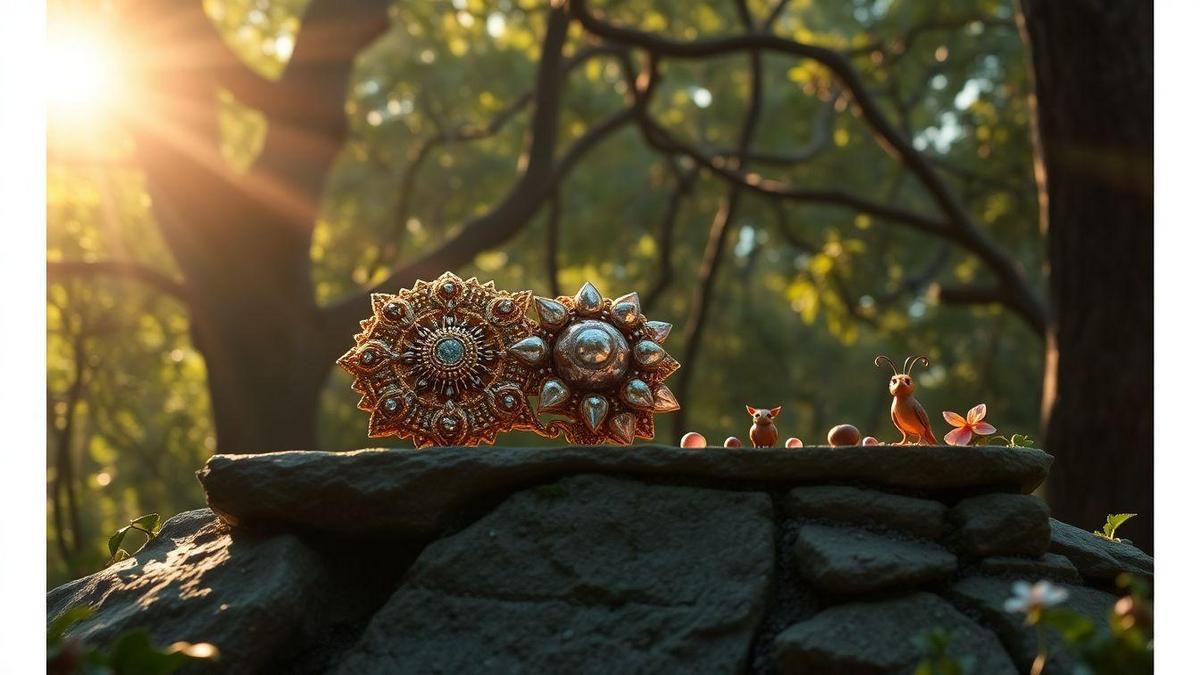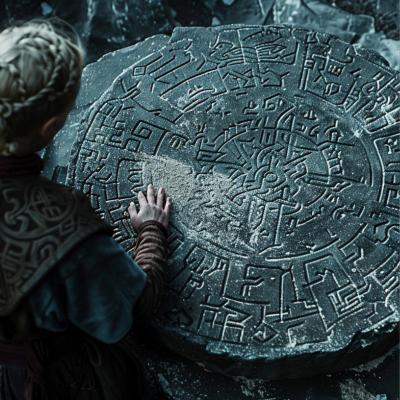Transformation artifacts in ancient mythologies play a pivotal role in both the storytelling and in understanding the cultures that created them. These magical objects, which range from rings to potions and wands, are often employed as devices that enable a change in shape, status, or even the very essence of a being. In numerous tales, these artifacts symbolize desires, fears, and the pursuit of power or redemption. Through them, myths offer us a unique window into the beliefs and values of ancient societies, reflecting their perceptions of life, death, and transformation.
Beyond their narrative function, transformation artifacts also serve as metaphors for the changes individuals encounter in their own lives. Transformation is a universal theme that resonates deeply with the human experience. By exploring these artifacts, we can better understand how ancient cultures dealt with uncertainty and transition, and how these stories continue to influence contemporary thoughts about identity and change.

How Transformation Artifacts Work in Mythologies
Transformation artifacts in mythologies act as catalysts for change, enabling characters to undertake significant transitions on their journeys. In many narratives, these objects are imbued with supernatural powers that defy the natural laws of the world.
For instance, in Greek mythology, the Helm of Hades allows its wearer to become invisible, symbolizing not only physical transformation but also the ability to move between the worlds of the living and the dead. This transformative ability is frequently accompanied by responsibilities and consequences, reflecting the complexity of the choices that characters must make.
Additionally, transformation artifacts are often tied to rituals or tests that characters must face. These trials examine the courage and wit of heroes, serving as means for learning and growth. For example, in the story of The Wizard of Oz, the protagonist Dorothy’s path is filled with encounters that transform her, both physically and emotionally. The use of artifacts like the ruby slippers is crucial to her journey, symbolizing the power of choice and self-discovery.
Another important aspect of how these artifacts function is their connection to nature and the elements. In many cultures, transformation is seen as a process involving harmony with the environment.
In Norse mythology, for example, there are objects that allow transformation into animals, reflecting the interconnection between humans and nature. These artifacts represent the necessity of respecting and understanding the world around us.
Finally, transformation artifacts often possess symbolic meaning that extends beyond their practical use in stories. They represent the duality of human nature – the struggle between good and evil, light and darkness, the known and the unknown.
Thus, transformation is not merely a change of form but an internal journey that leads characters to confront their own limitations and fears. This depth makes transformation artifacts central elements in mythological narratives, contributing to the rich tapestry of meanings these stories provide.
Advantages of Understanding Artifacts in Mythologies
Understanding transformation artifacts in mythologies offers a range of benefits that go beyond simply enjoying the stories. This comprehension allows for a deeper analysis of the values and beliefs of ancient cultures. Each artifact carries a set of meanings that reflect the aspirations and fears of the societies that created them.
For example, Merlin’s magical wand is not merely a tool of power but also a symbol of wisdom and the responsibility that accompanies such power. Exploring these meanings can provide valuable insights into the collective psychology of a given era.
Moreover, analyzing transformation artifacts can enrich our understanding of narratives and characters. Often, artifacts serve as extensions of a character’s identity and represent their personal journeys. By understanding how and why these artifacts work, we can better appreciate the complexities of characters and their motivations. This allows us to connect more meaningfully with the stories, making them more relevant to our own lives.
Another benefit of studying transformation artifacts is the ability to identify universal themes that still resonate today. Transformation is a fundamental human experience, and the myths surrounding it offer valuable lessons about adaptation and growth.
By linking these themes to our own experiences, we can find inspiration and guidance during times of change. This is particularly relevant in a modern world where changes are constant and often challenging.
Finally, understanding transformation artifacts in mythologies can foster curiosity and respect for cultural diversity. By exploring how different societies approached the idea of transformation, we can appreciate the richness of traditions and myths across the globe.
This appreciation may encourage us to seek connections among cultures and value the stories that unite us, despite our differences. Thus, understanding transformation artifacts is not only an academic pursuit but also a journey that connects us to a broader tapestry of human experience.
How Transformation Artifacts in Mythologies Influence Narratives

Transformation artifacts in mythologies profoundly and multifacetedly influence narratives. They serve as turning points within stories, catalyzing significant changes in plot and character circumstances. When a hero encounters a magical artifact, it often signals the start of a new phase in their journey, compelling them to confront challenges and adversities that once seemed insurmountable. This dynamic keeps the audience engaged and invested in the character’s path, creating anticipation and excitement.
In addition, transformation artifacts frequently introduce elements of conflict and tension within narratives. The struggle for control or possession of a powerful artifact can drive the story’s action. For instance, in Egyptian mythology, the Book of the Dead is an artifact containing the knowledge necessary for life after death.
The quest for this knowledge can create rivalries between gods and humans, reflecting the eternal struggle between life and death. Such conflict enriches the narrative and allows for deeper reflection on existential themes.
Another way transformation artifacts influence narratives is through the construction of symbolism and meaning. These objects often carry meanings that go beyond their literal use, representing broader ideas about power, identity, and change.
For example, the sword Excalibur in the legend of King Arthur symbolizes legitimacy and leadership, representing not just military power but also the responsibility that accompanies leadership. This symbolism enriches the narrative and provides the audience with an additional layer of interpretation.
Finally, transformation artifacts can also serve as reflections on the human condition. By exploring how these objects affect characters, stories often address questions of morality, ethics, and the nature of desire.
In many narratives, the pursuit of a transformation artifact may lead to unforeseen consequences, causing characters to question their own motivations and the cost of their ambitions. This exploration of the human condition makes narratives more resonant and relevant, allowing readers or viewers to reflect on their own lives and choices.
- Connection with Identity: Artifacts often reflect characters’ identities, helping shape who they are and who they become.
- Catalysts for Change: They act as triggers for events that alter the course of the narrative, creating decisive moments.
- Central Conflicts: The struggle for control of an artifact can be the focal point of a story, generating tension and drama.
- Deep Symbolism: Each artifact carries meanings beyond its use, enabling varied and complex interpretations.
- Moral Reflection: Many stories explore the consequences of ambition related to these artifacts, leading to ethical considerations.
- Universal Themes: Transformation is a theme that resonates with human experience, making stories timeless and relevant.
These factors demonstrate how transformation artifacts are essential to constructing rich and engaging narratives. They not only drive the plot but also offer profound reflections on human nature and life’s complexities.
Did You Enjoy Learning About Artifacts in Mythologies?
Exploring transformation artifacts in mythologies is a fascinating journey that reveals much about the human condition. These magical objects are not just story elements but also mirror our own struggles and aspirations. Through them, we can better understand the cultures that created them and the lessons still relevant in our modern world.
If this topic piqued your interest, there is a vast universe of mythologies and stories to explore. Each culture has its own transformation artifacts, each carrying a rich and meaningful history. Continue your quest for knowledge and discover how these narratives shape our understanding of the world and ourselves.
Frequently Asked Questions
What are transformation artifacts in ancient mythologies?
Transformation artifacts are magical objects that change something or someone in ancient mythologies. Think of magical swords or potions that cause transformations.
What are some famous examples of these artifacts?
Have you heard of Hades’ Helm? It makes whoever wears it invisible. Another example is the symbol of the goddess Isis, which brings transformation and rebirth.
How are these artifacts used in stories?
They are used to help heroes or grant powers. For example, a hero might use an artifact to transform and defeat enemies.
Why are transformation artifacts important in mythologies?
They illustrate change and growth, teaching lessons about power and responsibility. Often, transformation leads to a new beginning.
Where can I learn more about these artifacts?
You can read mythology books! Many libraries have great sections on ancient mythologies. Websites and documentaries are also good sources for learning more.
